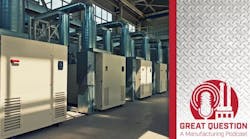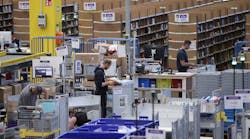Achieving a strong, long-lasting adhesion requires a lot more than just selecting the right adhesive.
To make it work, you must also perfect your surface preparation techniques.
"Bonds can fail cohesively or adhesively," writes "A cohesive failure, which is a breakdown of the adhesive itself, typically indicates the wrong adhesive that was used. Adhesive failures in which the bond between the adhesive and substrate fail are more difficult to assess."
To avoid those failures, recommends a number of surface preparation techniques designed to help properly wet and penetrate substrate surfaces and result in a strong, permanent bond:
Degreasing - Degreasing is a principal step in surface preparation by removing loosely held dirt and other contaminants from surfaces.
This typically includes two steps:
- The surface is either vapor degreased, wiped clean, or rinsed repeatedly, using the appropriate solvent, until the surface is free of all contaminants. How much this is done depends on the degree of contamination.
- The surfaces are cleaned and dried completely to remove any residual solvent.
Abrasion - After degreasing, mechanical abrasion removes heavy loose surface deposits such as dirt, oxide layers, and other contaminants. Mechanical abrasion also increases the surface area for bonding, a critical factor. Some of the most effective mechanical abrasion methods include sandblasting, wire brushing, and abrasion with sandpaper or emery cloth. The surfaces must be cleaned both before and after abrasion to remove pre-existing contaminants.
Chemical Treatment - An alternative to mechanical treatment is chemical etching. Specific chemical techniques have been developed for treating different substrates. These treatments change the physical and chemical properties of the surface to improve adhesion. A wide array of various acids, bases and solvents are used for chemical etching.
Physical Methods - Often neither chemical treatment nor mechanical abrasion is effective. In these cases, techniques referred to as "physical methods can change the plastic surface’s reactivity and modify it for better adhesion. Some common physical methods include:
- Flame treatment
- Corona discharges
- Plasma treatment
"Surface preparation is critical for good adhesion," notes. "Fortunately, there are a fairly wide number of relatively simple and inexpensive techniques that can be used to prepare substrates. The proper surface preparation technique is usually dictated by the nature of the substrate. Other times, surface preparation could depend on safety issues. Ultimately, engineers must consider all approaches and choose the appropriate technique based on effectiveness, cost, safety, and the shelf-life of the substrate being treated."










